
Dato' N.Subra Homeopathy
CANCER
LOOK OUT FOR THESE SYMPTOMS IT COULD BE CANCER



The word cancer frightens us and nobody likes to hear the word. If discovered early the chance to survive is bright. Knowing the facts and understanding the symptoms is a good way to make sure if something is not right.



POSSIBLE SIGNS INDICATING CANCER
DRASTIC AND UNITENTIONAL WEIGHT LOSS
Fast loss of weight for no apparent reason
PERSISTENT TIREDNESS
Experiencing fatigue and feeling tired. Colon cancer and leukaemia generate these symptoms
SEVERE AND PERSISTENT PAIN
Constant pain that seemingly has no cause or reason especially treatment is being taken but not working. Depending on the type of cancer you may experience prolonged periods of pain in the affected area. Bone, brain and ovarian cancers do can be noticed because of the pain associated with it. However, some type of cancer gives no pain.
UNHEALED SORES
Mouth ulcers that take far too long to disappear, the scabs can be a sign that either the immune system is not functioning normally or that the type of cancer (like mouth or oral) is showing up.
CHANGES ON THE SKIN OR A WEIRD LUMP
A lump, thickening or change in the skin could be an indicator that everything is not as it should be. Keep an eye on any unusual and new freckles, moles or warts and if they change size or colour. Reddened skin, blotches and bleeding on the skin can also be signs of other cancers
FREQUENT FEVER
Cancer affects the immune system which results in frequent fever for no reason at all
PERSISTENTCOUGH
Be concerned if a cough does not go away. Be concerned if there is pain in the chest, back or shoulder area
A CHANGE IN BLADDER OR BOWEL HABIT
Wanting to go to toilet more often either to urinate or release your bowels could be a sign of cancer. Signs of prostate cancer include pain when passing urine or blood in urine. Diarrhoea and constipation could be signs of colon cancer.
TROUBLE SWALLOWING FOOD
Struggling to swallow food or experiencing indigestion, it could be signs of stomach, oesophagus or throat cancer
OTHER SYMPTOMS
Swollen feet and general changes to how the body looks feels
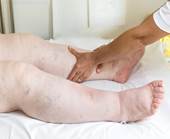

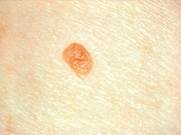
CANCER
Cancer is the uncontrolled growth of abnormal cells in the body. Cancer develops when the body’s normal control mechanism stops working. Old cells do not die and instead grow out of control, forming new, abnormal cells. These extra cells may form a mass of tissue, called a tumour. Some cancers, such as leukaemia, do not form tumours.
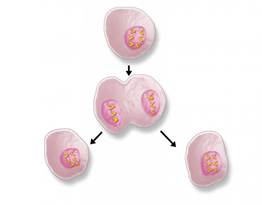
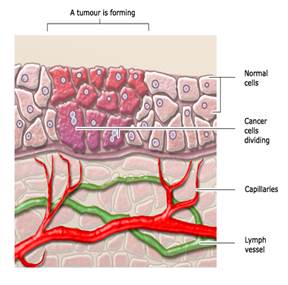
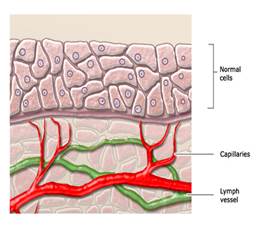
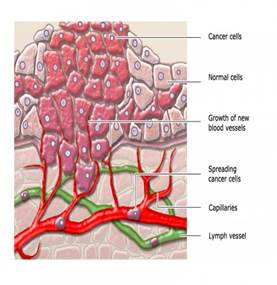
The human body is made up of trillions of cells. These cells grow and divide in a controlled way to produce more cells as they are needed to keep the body healthy. When cells become old or damaged, they die and are replaced with new cells. However, sometimes this orderly process goes wrong. The genetic material (DNA) of a cell can be damaged or changed, producing mutations that affect normal cell growth and division. When this happens, cells do not die when they should and new cells form when the body does not need them. The extra cells may form a mass of tissue called a tumour. All cancers begin in cells, the body’s basic unit of life. Cancer can start anywhere in the body. Many cancers form solid tumours, which are masses of tissue. Cancer of the blood, leukaemia does not form solid tumours. Cancerous tumours are called malignant as they spread or invade, nearby tissues. In addition, as these tumours grow, some cancer cells can break off and travel through the blood or the lymph system to other parts and form new tumours far from the original tumour.
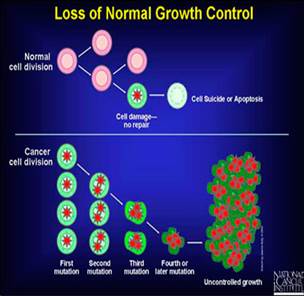
TYPES OF CANCER
BREAST CANCER
Often, there are no symptoms of breast cancer but signs of breast cancer include a breast lump or an abnormal mammogram. Breast cancer stages range from early, curable breast cancer to metastatic breast cancer. There are different types of breast cancer. In addition, breast cancer in men is not uncommon and male breast cancer must be taken seriously.
COLORECTAL CANCER
Colon cancer and cancer of the rectum usually begin as a small polyp. While most colon polyps are benign, some do become cancerous. Colon cancer symptoms may include a change in bowel habits or bleeding, but usually colon cancer strikes without symptoms. it is important to get a colon cancer screening test, such as a colonoscopy.
OVARIAN CANCER
Ovarian cancer occurs when a cancerous tumour is in a woman’s ovary. In most cases, there are no known causes. There are often no symptoms, but ovarian cancer warning signs include ongoing pain or cramps in the belly or back, abnormal vaginal bleeding, and nausea and bloating.
PROSTATE CANCER
Prostate cancer occurs when cells in the prostate gland grow out of control. There are often no early prostate cancer symptoms, but some men have urinary symptoms and discomfort.
LUNG CANCER
Lung cancer starts when abnormal cells grow out of control in the lungs. Lung cancer and smoking often, but not always, go hand in hand. There usually are no signs or early symptoms of lung cancer. As lung cancer stages advance, lung cancer symptoms may include coughing, wheezing, shortness of breath, and bloody mucus.
MELANOMA OR SKIN CANCER
Skin cancers include melanoma, basal cell and squamous cell. Basal and squamous cell are common and treatment is very effective. Malignant melanoma, especially in later stages of melanoma, is serious and treatment is difficult. Exposure to the sun’s rays is the biggest cause of melanoma and other skin cancers, but early diagnosis and treatment can increase the survival rate from melanoma.
THERE ARE FIVE MAIN CATEGORIES OF CANCER CARCINOMAS
begin in the skin or tissues that line the internal organs.
SARCOMAS
develop in the bone, cartilage, fat, muscle or other connective tissues
LEUKEMIA
begins in the blood and bone marrow.
LYMPHOMAS
start in the immune system.
CENTRAL NERVOUS SYSTEM CANCERS
develop in the brain and spinal cord.
THE THREE MAIN TREATMENTS FOR CANCER SURGERY
Directly removing the tumour
CHEMOTHERAPY
Using chemicals to kill cancer cells
RADIATION THERAPY
Using X-rays to kill cancer cells
CARCINOMA
Cancer that begins in the skin or in tissues that line or cover internal organs.
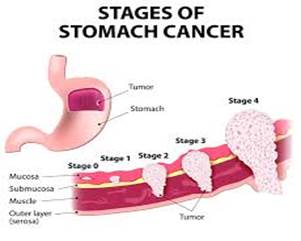
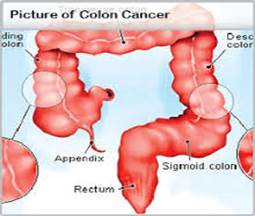
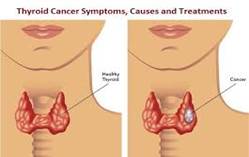
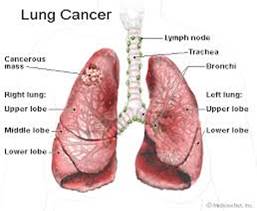
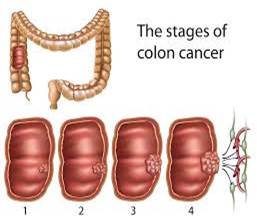
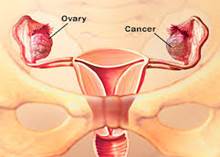
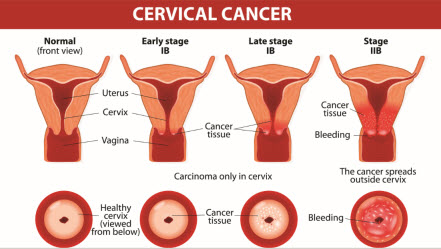
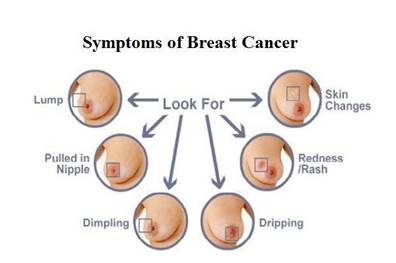
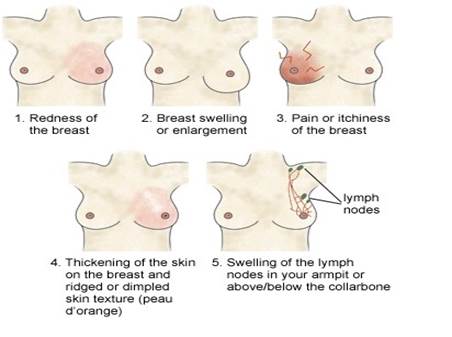
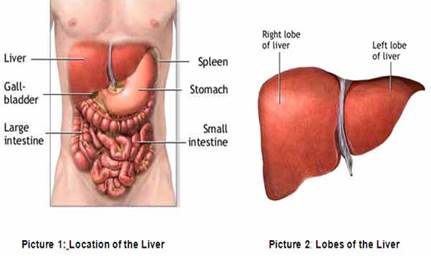
SYMPTOMS OF LIVER CANCER
EYES AND SKIN GETS YELLOW, SENSORY LOSS, GENERAL MALAISE, WEIGHT LOSS FEVER OF UNKNOWN ORIGIN, LOSS OF APPETITE ABSCENCE OF TENDON REFLEXES OF LIMBS, LIMB WEAKNESS, PAIN AND TENDERNESS ESPECIALLY IN THE UPPER RIGHT ABDOMINAL LOSS OF APPETITE, WEIGHT LOSS
SARCOMA
Cancer that begins in bone, cartilage, fat, muscle, blood vessels, or other connective or supportive tissue.
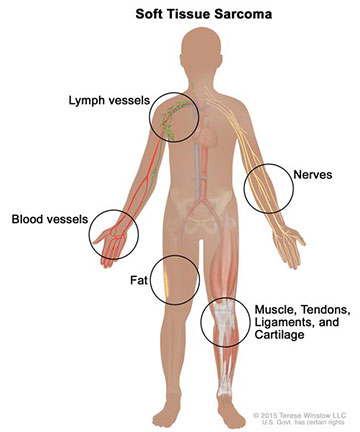
LEUKEMIA
Cancer that starts in blood-forming tissue such as the bone marrow and causes large numbers of abnormal blood cells to be produced and enter the blood.
LYMPHOMA AND MYELOMA
|Cancers that begin in the cells of the immune system. Central nervous system cancers -- cancers that begin in the tissues of the brain and spinal cord.
CANCER METASTASIS

CHEMOTHERAPY AND RADIOTHERAPY
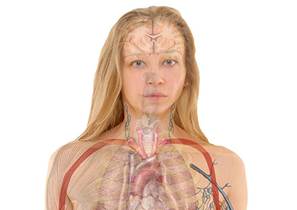

Chemotherapy refers to a type of cancer treatment in which a patient is given drugs either orally or intravenously that are designed to kill cancer cells. One or more drugs called cytotoxic anti-neoplastic drug may be given at a time. Cancer cells divide rapidly. Chemotherapy targets the cells that divide rapidly. Some normal cells also divide rapidly like the cells in hair follicles and digestive tract. These cells would also be damaged by chemotherapy; this is why the patients experience many side effects when undergoing treatment.
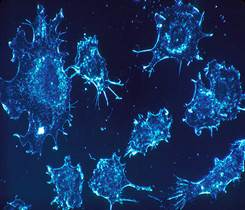
CHEMO AND WHEN IS IT ADMINISTERED
NEO ADJUVANT THERAPY
It will be administered prior to a surgery to shrink a tumour.
ADJUVANT THERAPY
It will be given to minimise the chances of cancer cells returning after surgery|
PRE-OPERATIVE THERAPY
It would be given before and after surgery
CHEMORADIATION
Chemotherapy integrated with radiotherapy
PALLIATIVE CHEMO
It is to help relieve cancer symptoms and slow down cancer development After it has spread to other parts of the body
CHEMO IS UTILISED TO MANAGE MALIGNANCIES
Leukaemia, lymphoma, breast, lungs, ovaries and numerous myelomas
SIDE EFFECTS OF CHEMOTHERAPY
Skin problems, Hair loss, Head ache, Muscle pain, Abdominal pain, Fatigue, Loss of appetite, Nausea and vomiting, Constipation and diarrhoea
RADIOTERAPY
Radiation treatment refers to a type of cancer treatment in which high-doses of radiation are delivered to cancerous tumours in the body. The beams of radiation pass through the skin and other materials to target a specific location where a tumour is located. Radiation damages the DNA of the cancer cells, causing them to die. The process of receiving radiation treatment is painless and side effects are often limited to the areas of the body around the tumours that receive the treatment. Other common side effects include fatigue and skin irritation.
FORMS OF RADIATION SEVERAL TYPES OF RADIATION TREATMENT ARE USED TO TREAT CANCER. EXTERNAL BEAM RADIATION
It is effective for large tumours.
STEREOTACTIC RADIOSURGE
It is preferable for smaller tumours or tumours in the brain.
HDR BRACHYTHERAPY
It is the only type of radiation treatment that starts inside the body.
RADIOTHERAPY CAN BE GIVEN AT DIFFERENT EVENTS RADICAL TREATMENT (CURATIVE)
It is given for prolonged benefits. Can be given by itself or combined with other treatment. It is given before a surgery to shrink some tumours or after surgery to suppress the development of any remaining cancer cells. It can be administered before, during, or after Chemo. Hormone treatment is administered to enhance overall results.
PALLIATIVE RADIOTHERAPY
It is given to shrink tumours as well as relieve cancer symptoms or to prolong life
RADIOACTIVE THERAPY CAN BE ADMINISTERED IN TWO WAYS: INTERNAL RADIATION THERAPY OR EXTERNAL BEAM RADIOTHERAPY.
A radiation source is placed inside the body. Such a radiation source may be in liquid or solid form. If the source is solid then such therapy is known as brachytherapy. In such a treatment, radiation is placed in the body in or near the tumour. Such radiation is in the form of ribbons, seeds or capsules. Liquid radiation is administered through an IV line. It travels through the body trying to find and kill cancerous cells. Radiotherapy focuses on solid tumours including those of the spine, skin, cervix, and larynx prostate. It is often utilised in the case of breast cancer.
SIDE EFFECTS OF RADIOTHERAPY
Radiotherapy damages non-cancerous cells and cause side effects. Fatigue is a popular side effect of radiotherapy. This may occur slowly or at once. It varies with individuals. Other side effects include hair loss, skin problems like sore skin, burning sensations, itching, peeling, or dryness. Such problems go on for a number of weeks. Though the approaches appear to be quite different, some of the side effects they cause are common, for instance, fatigue, hair loss and skin problems. Both chemotherapy and radiotherapy are known to be effective in treating different types of cancer at varying stages and the treatment used will largely depend on each case and the type of cancer being treated. Chemotherapy is the use of toxic chemicals infused into the body to destroy cancer cells. Chemotherapy utilizes the circulation system to convey a final knockout to growth cells. Their activity is not limited to malignancy cells. The medications cannot separate malignant and non dangerous cells, they influence both. Radiation therapy uses gamma or x-rays to penetrate the body and destroy cancer cells.
COMBINATION
In some cases, your oncologist may suggest a combination of chemotherapy and radiation treatment. This approach may be particularly useful for patients with advanced stage cancer, where cancerous cells have spread to one or more organs beyond the organ where the cancer originated
Dato' N.Subra Homeopathy
The Homeopathy